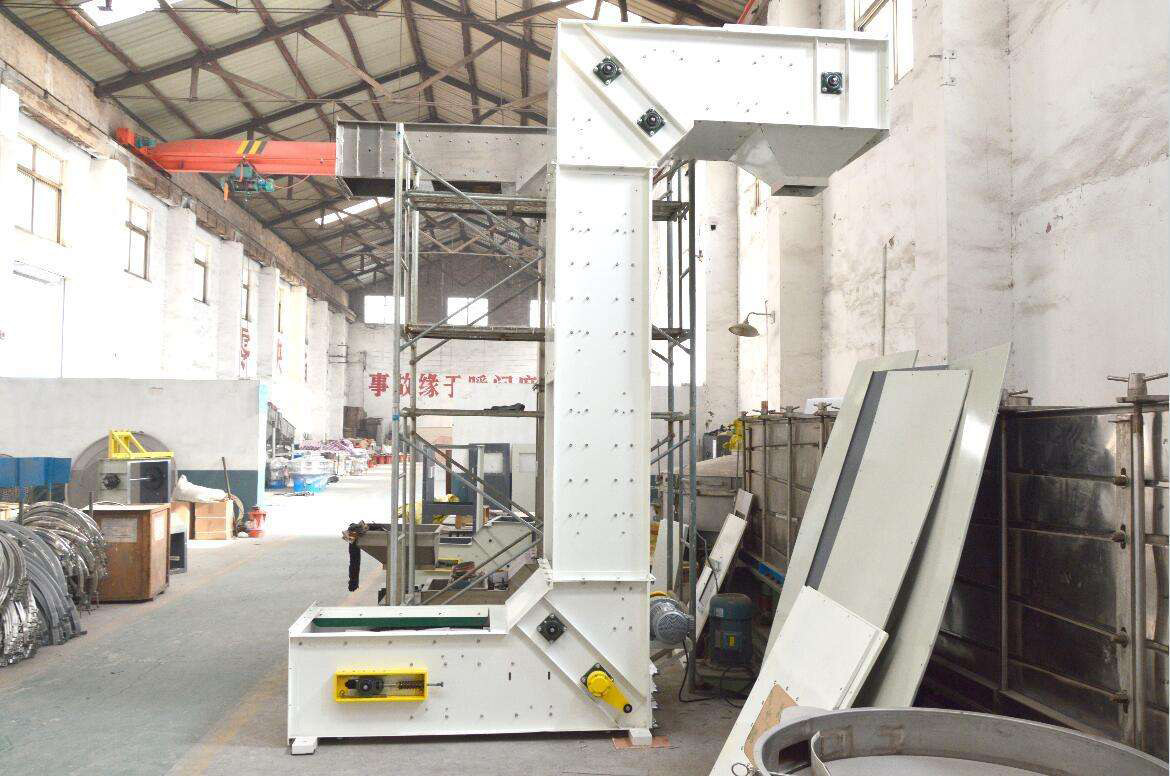The main form of the
Z type bucket elevator:
Z type bucket elevator is used for horizontal and vertical conveying the powder, granular, small block materials. Z type bucket elevator has the advantages of compact structure, small occupied area, large lifting height, good sealing performance and no damage to materials, large capacity, easy to maintain.
As a commonly used lifting device, the selection of the Z type bucket elevator is subject to many factors. Generally, the selection of bucket elevators depends on the following factors:
1. The form of the material: whether the material is powdery or granular or small;
2. Physical properties of the material: whether the material has adsorption or viscosity, and whether it contains water;
3. The proportion of material: The general bucket elevator parameters are designed and calculated for materials with a specific gravity of 1.6 or less. Too large a specific gravity of the material needs to be calculated for the traction force and the tensile strength of the transmission part;
4. Lifting capacity volume per hour
Z type bucket elevator operating specifications:
1. The principle of “no-load start, no-load stop” must be observed during operation. That is, the machine is turned on first, and after the operation is normal, the material is fed again; the material in the machine should be emptied before parking.
2. When working, the feeding should be uniform, and the discharging pipe should be smooth to avoid blockage. If the release is blocked, stop feeding and stop immediately, pull the base plate to remove the blockage. Note that you cannot reach the base directly by hand.
3. During normal operation, the hopper belt should be in the middle position of the barrel. If it is found that there is a deviation phenomenon or the bucket belt is too loose and causes the hopper to collide with the barrel, it should be adjusted by the tensioning device in time.
4. Strictly prevent large foreign objects from entering the machine base to avoid damage to the hopper and affect the normal operation of the bucket lifter. When conveying materials that have not been cleaned first, an iron grid should be added to the inlet to prevent fiber impurities such as straw, straw, and rope from entering the machine base and causing entanglement.
5. The tension of the hopper belt should be checked regularly. Whether the connection between the hopper and the hopper belt is firm. If looseness, shedding, slanting and damage of the hopper are found, it should be repaired or replaced in time to avoid more serious consequences.
6. In the event of a sudden shutdown, the material accumulated in the base should be discharged and then turned on.





